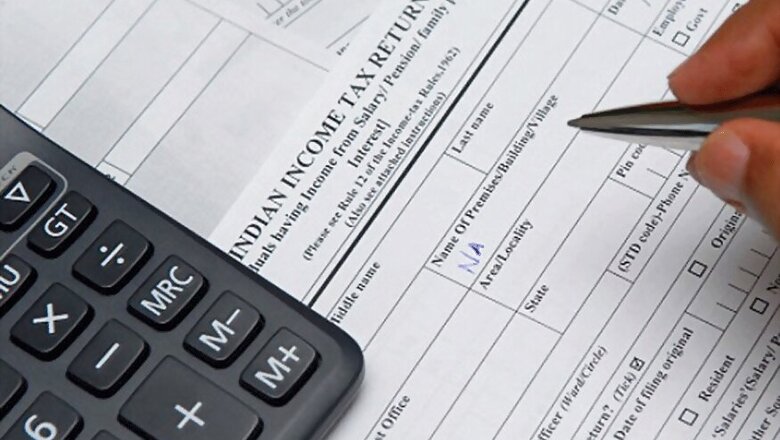
views
New Delhi: The 31st August deadline to file income tax return is soon approaching. This year, the income tax authorities notified the new tax return forms applicable for the financial year 2017-18 in April, well in advance, providing sufficient time for the taxpayers to collate information.
Different forms are applicable for different assessees, based on factors such as quantum of income, type of income, residential status of the taxpayer etc. Selection of the right form is vital as choosing the wrong form will make your return invalid.
The new forms incorporate modifications brought about in the Finance Act, 2017. Also, the deadline (unless extended) is not applicable to individuals and firms whose accounts are required to be audited.
So without further ado, let's find out which form is the right one for you!
ITR 1
Also known as Sahaj Form is for individuals who are a Resident and Ordinarily Resident (ROR) with an annual income of up to Rs 50 lakh from the following sources:
Income from Salary/Pension
Income from a single House Property (excluding losses brought forward from previous years)
Income from Other Sources ( excluding income from horse racing and winnings from the lottery)
In case of clubbed Income Tax Returns, where income from spouse and a minor child is also included, ITR 1 can only be filed if the aggregate income of the assessment year meets the above specifications.
Major changes made in ITR 1 for FY 2017-18:
Earlier, ITR 1 was applicable for all Residents, Residents Not ordinarily resident (RNOR) and Non-residents. Now, only Resident and Ordinarily Resident (ROR) can file this form.
Another major change this year is the requirement to furnish a break-up of salary components along with the details of exemptions claimed. Earlier, these details were only reflected in Form 16 that is issued by the employer.
Additionally, the assessee will also be required to furnish a break up of Income under House Property which was earlier mandatory only for ITR 2 and other forms.
ITR 2 Form
ITR 2 is for individuals and Hindu Undivided Family (HUFs) who are not eligible to file ITR 1 and who do not have income under the head "Profits and Gains from Business or Profession" (PGBP). Hence, only individuals/HUFs earning from the following sources are eligible to file ITR 2:
Income from Salary/Pension
Income from House Property (can be from more than one properties)
Income from Capital gains/ property (both long term and short term)
Income from Other Sources ( including income from horse racing, winnings from lottery and other legal gambling activities)
Agricultural Income of more than Rs 5,000
Resident not ordinarily resident (RNOR) and a Non-resident
Foreign Assets/Foreign Income
Major changes made in ITR 2 for FY 2017-18:
Since ITR 1 is no longer applicable for RNORs and the non-residents, they have to file ITR 2. Earlier, the PGBP head which constituted Part B of total income section (computation of total income) of ITR 2 has now been removed.
Also, Schedule-IF (Income from Firm) and Schedule-BP have been removed. This means that individuals earning from partnership firms will now have to file ITR 3 instead of ITR 2.
ITR 3
ITR 3 is applicable for individuals and HUFs earning from business or profession. It cannot be used by any taxpayer other than individuals or HUFs (like companies, partnership firms, etc.) having income under the PGBP head.
Major changes made in ITR 3 for FY 2017-18:
The option to select 115H ( non-residents of previous year who became resident in the assessment year) has been added to the general information tab.
GST related information has been added in the Profit and Loss schedule. A cap of 40 per cent depreciation has been set for all relevant Schedules. Also, Partners of partnership firms as against ITR 2 will have to file their returns in ITR 3.
ITR 4
ITR 4 is applicable for individuals, HUFs and partnership firms who have opted for presumptive income scheme under Section 44ADA, Section 44AD and Section 44AE of the Income Tax Act. However, if the turnover exceeds Rs 2 crore, the assessee will have to file ITR 3.
Furthermore, the requirement to report GSTR (Goods and Services Tax return) Number turnover/gross receipts as per GST return has been included in the new form.



















Comments
0 comment